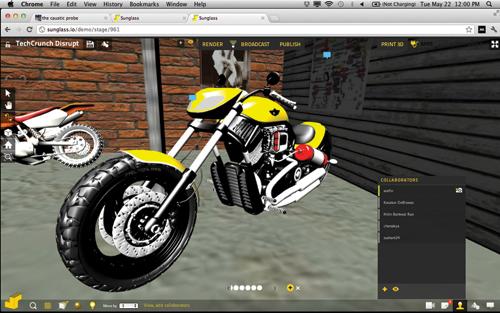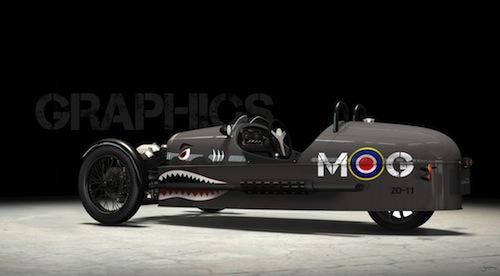Getting Real With 3D Visualization
September 13, 2012

Take one look at a Morgan cycle car, and its iconic British racing style conjures up images of old-world craftsmen painstakingly sculpting clay models and bending wood forms and metal to come up with the retro designs.
That was certainly the design process years ago for the nearly century-old specialty sports car manufacturer, but at the modern-day Morgan Motor Co., it's a totally different story. Morgan has traded a manual process heavily dependent on 2D sketches and clay and foam modeling for state-of-the-art 3D visualization software that facilitates everything from early concept work to the production of marketing materials, all within an accelerated design cycle.

Morgan officials told us they have been able to "apply speed, accuracy, and efficiency to traditional design and manufacturing processes" using Autodesk's suite of 3D visualization tools. The latest proof point: Morgan went from sketches of its new 3 Wheeler model to full production in five months while showcasing images of the final vehicle to potential customers, which led to 300 orders placed well before the car rolled off the production line.
"The power of that kind of tool for a small company like ours is incredible," said Matthew Humphries, chief designer at Morgan, which employs around 170 people, including fewer than 10 engineers. "People were able to visualize something in such detail that it gave them the confidence to put down a deposit on something that didn't even have a sale price."
Gaming advances the 3D cause
Thanks to some pretty sophisticated advances on the hardware side and the software side, more companies are mirroring Morgan's strategy and using sophisticated 3D visualization capabilities to design, optimize, and help customers experience products during the prototyping process -- well before any physical products are produced.
Earlier generations of visualization software primarily delivered lightweight viewing capabilities, allowing 3D CAD models to be presented in a form that held meaning for seasoned engineers or even dedicated CAD users -- not mainstream users or even potential customers. The early visualization tools were also limited by their tight coupling with specific CAD packages.
Conversely, a new genre of 3D visualization tools and novel hardware devices are enabling engineering teams to create a more realistic representation of a potential product design while sharing it with a wider audience in the context that it might be used and mimicking some actual behaviors. The increased realism helps facilitate feedback far earlier in the design process while helping engineers optimize designs and catch potential problems before making the investment in physical prototypes.
About the Author(s)
You May Also Like



